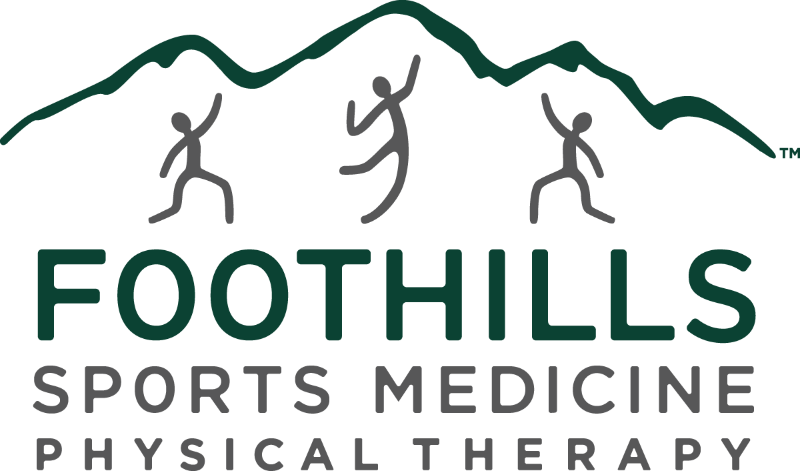Foothills Rehab has 21 locations throughout Arizona. Our Gilbert physical therapy clinic provides extensive services to help patients recover from injuries or pain. We focus on a hands-on, individualized approach to therapy that ensures you get the best results possible. To schedule a free assessment with one of our expert staff, go online here. To find out more about Gilbert physical therapy, follow our blog.
Ben Hagar has his masters in physical therapy as well as his Postural Restoration and Strength and Conditioning Certificates. In addition to being a dedicated member of the Foothills staff, he is also a physical therapy consultant to the Arizona Diamondbacks and Chicago Cubs. He is here today to talk about factors associated with baseball injuries and how to prevent them.
Baseball injuries can be caused by a variety of issues. Throwing mechanics, volume of play, overuse, movement pattern dysfunctions, and trauma can all lead to injuries that affect an athlete’s ability to stay on the field. Injuries incurred in an on-field trauma are often unavoidable, but throwing volume, mechanics, and a total-body approach to movement patterns may help limit baseball injuries.
There is growing concern for the rising rate of shoulder and elbow injuries at not only the professional level of baseball, but at all age groups. A large amount of these injuries may be associated with overuse at a young age. In Arizona specifically, the climate allows for year-round baseball, which is great for player development and exposure. However, it can also lead to overuse and set the stage for an injury-riddled athletic career.
Many youth baseball players now “specialize” in the sport; they play year-round on school teams, club teams, in fall ball, summer ball, showcases, and scout teams. The practice and training associated with each team leads to an excessive volume of training and throwing that even a professional would not be able to handle. Many coaches attempt to manage a pitcher’s throwing volume by using pitch count limits to prevent overuse. However, they often neglect the amount an athlete is throwing while they warm-up, play another position, or while on another team. Some coaches may not even be aware an athlete is playing on another team.
Regardless of the skill level or how “good” an athlete’s throwing mechanics may be, this increased volume leads to a huge increase in risk for injury. Players, coaches, and parents should all be aware of the risks associated with this type of volume. There needs to be communication between everyone involved about how much a player is training. Baseball training is a balancing act and if one training aspect is added, another must be subtracted. Continuing to up the amount of throwing, especially for a young athlete, could halt their career before it starts.
Coaches may claim they understand these factors, but recent research on amateur players (conducted by USA Baseball and Major League Baseball) found staggering statistics that prove otherwise. Of the athletes studied, 45% pitched in a league without pitch counts or limits, 43.5% pitched on consecutive days, 30.4% pitched on multiple teams with overlapping seasons, 19% pitched in multiple games on the same day, and 13.2% pitched competitive baseball for more than 8 months per year (Yang et al. 2014). Parents, players, and coaches should visit www.pitchsmart.org for an excellent guideline on training while avoiding pitching injuries.
While throwing volume and frequency is hugely important to consider, there are other factors that can also contribute to injury while playing baseball. Just because an athlete is skilled, they do not necessarily have the proper mechanics that will decrease stress on the body. In fact, one of the largest misconceptions I see in clinics is the belief that a lot of strength and mobility will decrease the risk for injury. Actually, the opposite is true and this often leads to imbalances among the muscles in the body that must be compensated for when throwing. Many coaches at all levels try to teach proper mechanics, but don’t realize that the player does not have the physical ability at certain joints to perform correctly.
Baseball is a sport with a lot of repetitive movements, so any dysfunction at a joint, such as the hip or ankle, can have a huge effect on how force moves throughout the body. For example, if the leading hip lacks the ability to internally rotate (due to joint or soft tissue restrictions), sequencing and timing at every other joint will be affected. As the acceleration phase of pitching/throwing takes place, the hip cannot shift and center into the socket and rotation is restricted where it should occur. The athlete must then compensate at one of many joints in order to throw the ball. This can cause a pitcher to open the trunk too soon or fall off to the side arm, leaving the elbow and or shoulder vulnerable to stress and injury. Therefore, this arm injury may have nothing to do with the mobility of the arm itself. Even some of the best professional baseball pitchers I have worked with have movement pattern dysfunction, which can lead to injury and a decrease in performance.
Therapists try to zero in on the true source of movement dysfunction because an arm injury isn’t always caused by an issue in the arm. It is one thing to have the mobility to perform a movement, but it is another to perform with the correct timing and sequencing to avoid injury and improve performance. During evaluation of a baseball player, therapists obtain information on injury history, positions played, workload, schedule, mechanical changes, types of pitches/arm slots used, and where in the throwing sequence an injury may have occurred. Even video analysis of biomechanical factors is done when possible.
A postural analysis is also performed, where all joints are screened and a positional/postural assessment is taken along with an orthopedic evaluation. Once the diagnosis is confirmed and no additional testing or referral is needed, a movement impairment diagnosis is attached to the injury and the entire chain of movement is addressed. Interventions used are patient-specific and may include: manual therapy to the joint or soft tissue, neuromuscular inhibition techniques, postural repositioning/corrective exercise, integrated strength/endurance, and sport-specific interventions. Once an athlete is ready to begin throwing, a progressive throwing program is added to allow for proper loading progressions to return to sport.
A skilled physical therapist who understands all of the factors associated with baseball injuries can have an enormous impact in assisting the player, coaches, parents, strength trainers, and medical professionals in maximizing performance and preventing injury. We must all work together to reverse the growing epidemic of throwing-related injuries.
Factors Behind the Growing Epidemic of Baseball Injuries




